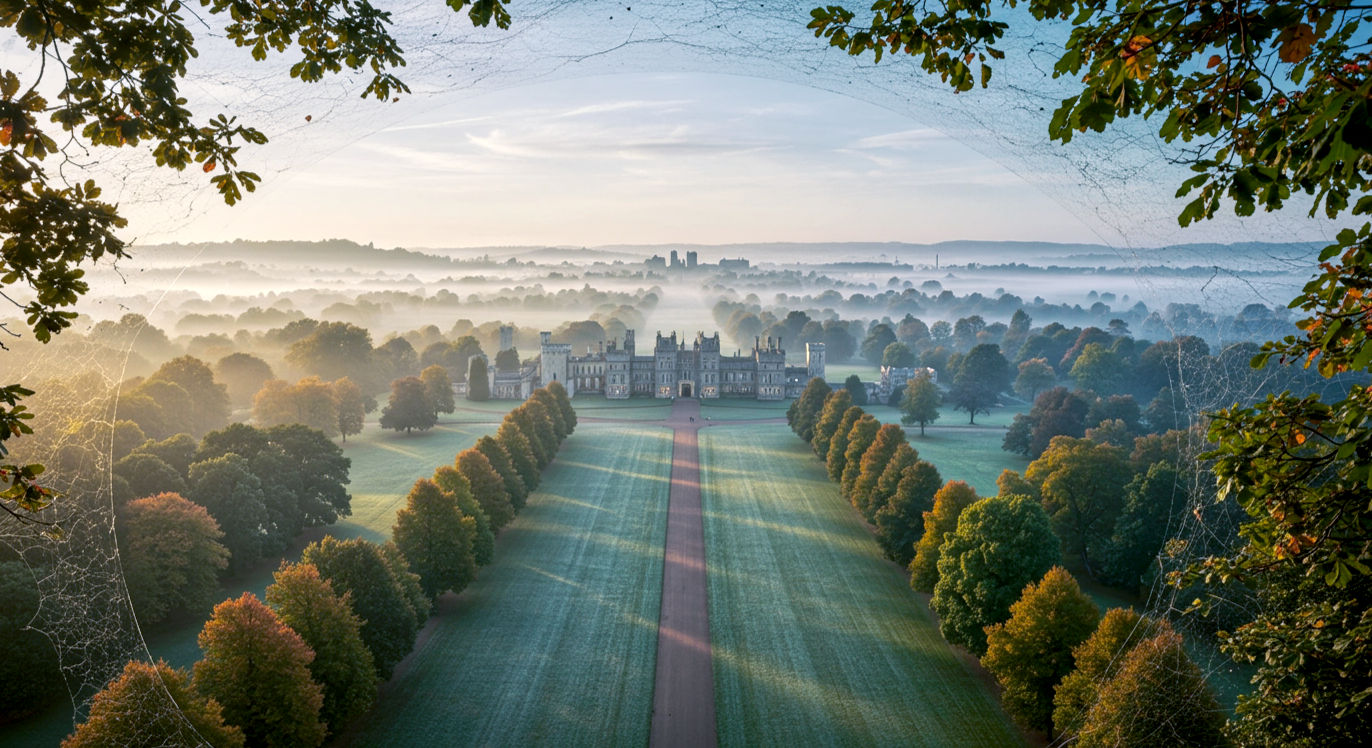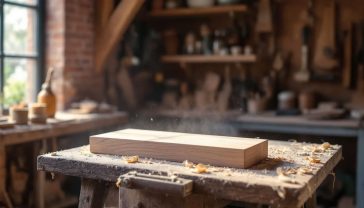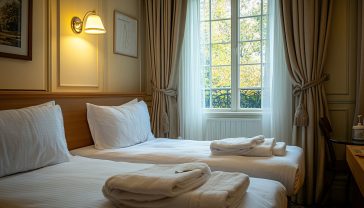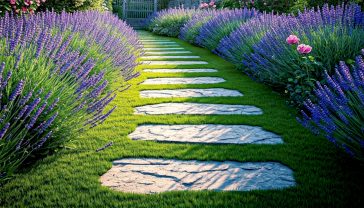The Royal Retreats of Windsor: Guide to the Castles, Cottages, and Country Homes of the Monarchy
Beyond Windsor Castle lies a hidden world of royal homes. Discover the stories behind Royal Lodge, Fort Belvedere, and the cottages of the modern monarchy.

This post may contain affiliate links. If you make a purchase through these links, we may earn a commission at no additional cost to you.
When you picture Windsor, what comes to mind? For most of us, it’s the colossal, flag-topped silhouette of Windsor Castle, a fortress that has dominated the Berkshire skyline for nearly a thousand years. It’s the backdrop to royal weddings, the final resting place of our longest-reigning monarch, and a symbol of Britain that’s as iconic as a red postbox or a good cup of tea.
But that’s only half the story.
Think of Windsor not as one giant palace, but as a royal village. Tucked away behind ancient oaks and rhododendron bushes in the vast expanse of Windsor Great Park lies a constellation of smaller, more private homes. These are the royal retreats: the lodges, cottages, and houses where monarchs and their families have escaped the ceremony of court life. They are places for picnics and privacy, for constitutional crises and quiet childhoods.
This is the Windsor the tourists don’t often see. It’s a landscape of homes that tell a more personal story of the Royal Family, from Queen Victoria’s quiet sanctuary at Frogmore to the charming playhouse gifted to a young Princess Elizabeth at Royal Lodge, and the secluded cottage now home to the Prince and Princess of Wales.
So, let’s pull back the velvet curtain. In this guide, we’ll journey beyond the castle battlements to explore the secret retreats of Windsor, uncovering the history, stories, and people that make this corner of Britain a truly living royal landscape.
The Heart of the Matter: Windsor Castle, The Ultimate Royal Fortress-Home
You can’t talk about Windsor’s retreats without starting with the mothership. Windsor Castle isn’t just a home; it’s the oldest and largest inhabited castle in the world. It’s been a royal residence, a military stronghold, and a national treasure for over 950 years. It’s the solid, stone heart from which the entire royal estate radiates.
From Norman Stronghold to Modern Monarchy
It all began with William the Conqueror. Around 1070, fresh from his victory at the Battle of Hastings, he built a simple timber fort on a chalk bluff overlooking the River Thames. His reasoning was pure military strategy: it was a day’s march from the Tower of London and perfectly placed to guard the western approach to the capital. It wasn’t built for comfort; it was built to control.
It was Henry II who started turning the splintery fort into a proper stone castle in the late 12th century, building the iconic Round Tower that still stands today. But it was King Edward III in the 14th century who truly splashed the cash. Fuelled by victories in France, he spent a fortune transforming Windsor into a Gothic masterpiece, building St George’s Chapel and creating a palace fit for his new order of knights, the Order of the Garter.
Centuries later, Queen Victoria and her beloved Prince Albert made Windsor their principal residence. They adored it. Albert, ever the innovator, helped modernise the castle, while Victoria found comfort there, especially after his death. She became known as the “Widow of Windsor,” and her presence cemented the castle’s role as a true family home for the modern monarchy.
A Castle of Two Halves: State vs. Private Life
Windsor Castle brilliantly manages a double life. On one hand, it’s a working palace, a stage for Britain’s grandest ceremonies.
- The Public Face: This is the world of the State Apartments, vast rooms dripping with gold leaf, masterpieces by Rubens and Van Dyck, and armour from centuries past. It’s where visiting presidents and kings are entertained. Then there’s St George’s Chapel, a breathtaking example of Gothic architecture. It’s not just a church; it’s the spiritual home of the Order of the Garter and the setting for some of the most joyful and sombre royal events, from the wedding of the Duke and Duchess of Sussex to the funeral of Her Majesty Queen Elizabeth II.
- The Private Quarters: But hidden away from the tour groups are the private apartments. For Queen Elizabeth II, this was her favourite home, her weekend escape from Buckingham Palace. It was here that she felt most relaxed. These were the rooms devastated by the terrible fire of 1992, her self-proclaimed annus horribilis. The fire, started by a faulty spotlight, destroyed over 100 rooms. But the restoration that followed was a triumph, a testament to the nation’s finest craftspeople who brought the castle back from the ashes.
Can You Visit?
Absolutely. Windsor Castle is open to the public for most of the year. You can tour the State Apartments, marvel at Queen Mary’s Dolls’ House, and pay your respects at St George’s Chapel. Top tip: Book your tickets online in advance to skip the longest queues, and allow at least three hours to see everything. It’s a full day out and a proper dive into the heart of British history.
The Picturesque Escape: Frogmore House and Gardens
Just a mile south of the castle, nestled in a tranquil corner of the Home Park, lies Frogmore House. If Windsor Castle is the grand, imposing patriarch of the royal estate, Frogmore is the elegant, artistic great-aunt. It has always been a place of peaceful retreat, particularly for the royal women who shaped its identity.
A Royal Sanctuary Steeped in History
The house was bought in 1792 by Queen Charlotte, wife of George III. She was a keen botanist and loved the sprawling gardens, using Frogmore as a country escape from the formalities of court. It was a place where she and her daughters could paint, read, and enjoy the gardens without being on public display.
However, Frogmore is most deeply connected with Queen Victoria. She adored the place. It was here, in the serene gardens, that she and Prince Albert felt they could truly be themselves. After Albert’s untimely death, Victoria’s love for Frogmore only deepened. She commissioned a magnificent Royal Mausoleum to be built in the grounds for him, and ultimately for herself. It became a site of pilgrimage for the grieving queen, a place of quiet contemplation. She would often write in a small teahouse overlooking the lake, surrounded by memories of her husband.
Inside Frogmore’s Walls
The house itself isn’t a grand palace. It’s an elegant but comfortable country home. Its interiors are famous for the work of Mary Moser, a celebrated 18th-century flower painter, who decorated an entire room with stunning floral garlands. The house reflects the passions of the queens who lived there—art, nature, and family.
In recent years, the Frogmore Estate gained new attention as the home of the Duke and Duchess of Sussex, who lived in Frogmore Cottage, a separate, smaller property on the estate, before they stepped back from royal duties.
A Garden of Royal Secrets
The real magic of Frogmore is its garden. It’s a 35-acre wonderland designed to look like a perfect natural landscape, with a winding lake, gentle hills, and carefully placed follies and summerhouses. It’s also home to the Royal Burial Ground, a less formal resting place than the Royal Vault at St George’s Chapel. Here you’ll find the graves of Edward VIII and Wallis Simpson, the Duke and Duchess of Windsor, laid to rest in the country he gave up his throne for.
Visiting Frogmore: A Rare Treat
Here’s the catch: Frogmore House and Gardens are rarely open to the public. Because it remains a private royal sanctuary, access is usually limited to just a few charity days a year, typically around the late May Bank Holiday. If you get the chance, grab it. A visit to Frogmore is a glimpse into a uniquely personal and peaceful corner of the royal world.
The Queen Mother’s Country Haven: Royal Lodge
Venture deeper into Windsor Great Park and you’ll find Royal Lodge, a house that, more than any other, is synonymous with one person: Queen Elizabeth, The Queen Mother. For over 70 years, this was her beloved Windsor home, a place of legendary hospitality and cherished family memories.
A Home Designed for Comfort, Not Ceremony
Royal Lodge didn’t start life as a grand home. It began as a much smaller keeper’s cottage in the 17th century. It was significantly rebuilt in the 1820s for the future King George IV, who used it for entertaining his friends.
But its modern story began in 1931 when King George V granted it to his second son, the Duke of York (the future King George VI), and his wife. They saw it not as a formal residence but as a family home for their two young daughters, Princess Elizabeth and Princess Margaret. They added wings to the house and cultivated the gardens, creating a relaxed country retreat. It was their escape, a place where the future King could garden in his old clothes and the Princesses could run free.
Y Bwthyn Bach: A Playhouse Fit for a Princess
Perhaps the most enchanting feature of Royal Lodge isn’t part of the main house at all. Tucked away in the gardens is Y Bwthyn Bach, which translates to ‘The Little Cottage’. This isn’t just any playhouse; it’s a perfect, two-thirds scale miniature Welsh cottage, gifted to Princess Elizabeth in 1932 by the people of Wales.
It had everything: running water, electricity, a working telephone, and even a tiny set of china. It was here that a young Elizabeth and her sister Margaret played for hours, learning the ropes of housekeeping in a home that was truly their own. It’s a wonderfully human touch amidst all the grandeur and a symbol of the happy, stable childhood their parents worked so hard to give them.
Royal Lodge Today
After her husband’s death in 1952, the Queen Mother made Royal Lodge her main country home. She lived there until her own death in 2002 at the age of 101. The house was famous for her garden parties and for its beautifully kept grounds, which she adored. Today, it is the official residence of the Duke of York, Prince Andrew.
A Strictly Private Affair
Unlike the Castle, Royal Lodge is a completely private home. It has never been open to the public, and you can’t see it from any public roads. Its story is one lived behind the gates, a testament to the Royal Family’s need for a place to simply be a family.
The Modest Newcomers: Adelaide Cottage
The latest addition to Windsor’s constellation of occupied royal homes is also one of its most modest. Adelaide Cottage, a Grade II listed property, became the new home for the Prince and Princess of Wales and their children in 2022. Their choice speaks volumes about the direction of the modern monarchy.
A History of Quiet Refinement
The cottage was built in 1831 for Queen Adelaide, the wife of King William IV. It was designed as a picturesque daytime retreat, a place for the Queen to read or take tea away from the main castle. It’s an example of “cottage orné” or decorated cottage style, meant to look like a rustic, charming country dwelling.
It has a surprisingly colourful history. One of its most notable residents was Group Captain Peter Townsend, the dashing Battle of Britain pilot who served as Equerry to King George VI. It was during his time here that his famous, and ultimately doomed, romance with Princess Margaret began. His presence links the cottage to one of the great royal love stories of the 20th century.
A Modern Royal Family Home
The decision by the Prince and Princess of Wales to move to Adelaide Cottage was significant. With just four bedrooms, it’s considerably smaller than their previous homes at Kensington Palace and Anmer Hall. The move was reportedly driven by a desire for a more “normal” life for their children, allowing them to walk to school nearby and enjoy the freedom of the Great Park.
It signals a move away from the “big house” mentality, favouring privacy and family life over grand-scale living. It’s a practical choice for a future King and Queen balancing public duty with raising a young family.
Peeking Over the Fence
Like Royal Lodge, Adelaide Cottage is a private family home with no public access. Its location deep within the park ensures the family has the seclusion they need, a world away from the long lenses of the paparazzi.
The King’s Lost Castle: Fort Belvedere and the Abdication Crisis
Of all Windsor’s royal retreats, none holds a more dramatic or poignant story than Fort Belvedere. This is not a castle in the traditional sense, but a magnificent folly that became the backdrop for the greatest constitutional crisis of the 20th century: the abdication of King Edward VIII.
A Folly Turned Royal Love Nest
Fort Belvedere was built in the 1750s for Prince William Augustus, Duke of Cumberland (infamous for his role in the Battle of Culloden). It was designed as a triangular Gothic tower, a “folly” intended to be a decorative feature in the landscape. For many years, it was used by various royal custodians.
Its defining chapter began in 1929 when it was granted to the charismatic and popular heir to the throne, Edward, Prince of Wales. He fell head over heels for the place. He spent a fortune renovating it, adding a swimming pool, tennis courts, and modern comforts. For him, it was the ultimate bachelor pad, a place to throw glamorous parties and escape the stifling protocol of court. It was here that he conducted his scandalous affair with the married American socialite, Wallis Simpson. The Fort became their secret love nest.
The Centre of a Constitutional Storm
When Edward became King in 1936, the Fort remained his preferred home. It was within its secluded walls that the drama of the abdication played out. As the government, the church, and the public refused to accept a twice-divorced woman as Queen, Edward was forced to choose between the crown and the woman he loved.
On the 10th of December 1936, it was from a room in Fort Belvedere that he signed the official instrument of abdication. The following night, he made his famous broadcast to the nation, explaining his decision, before driving away from his beloved Fort and into exile, never to live in Britain again.
What Happened to the Fort?
After the abdication, the Fort fell quiet. It was eventually leased to private tenants by the Crown Estate. It remains a private home today, its battlements and cannon a silent reminder of the King who gave up an empire for love.
A Glimpse into History
You cannot visit Fort Belvedere. It is hidden deep within the southern end of the Great Park. But its story is woven into the very soul of Windsor. It’s the ghost in the machine, a place of romance and heartbreak that changed the course of the monarchy forever.
The Green Ocean Connecting Them All: Windsor Great Park
You can’t understand the royal retreats without understanding their setting. Windsor Great Park is the vast, 5,000-acre green ocean in which these homes are islands. It’s the royals’ back garden, a landscape shaped by monarchs for over a thousand years.
A Royal Playground
Originally, it was a Norman hunting forest, a place for kings to chase deer and boar. Over the centuries, it was transformed into the magnificent parkland we see today. It’s a mixture of formal gardens, ancient woodland, open grasslands, and shimmering lakes.
For the Royal Family, it provides unparalleled privacy. It was here that Queen Elizabeth II would ride her ponies, free from public view. It’s where generations of royal children have learned to ride bikes and where the family can walk their dogs.
Key Features for Visitors and Royals Alike
Much of the Great Park is open to the public, and it’s a spectacular day out.
- The Long Walk: This iconic, tree-lined avenue stretches for nearly three miles in a dead straight line from Windsor Castle up to the Copper Horse, a giant statue of King George III on horseback. The view from the top, looking back at the castle, is one of the greatest in England.
- Savill Garden: A world-renowned ornamental garden filled with rare plants and beautiful seasonal displays. It’s a more formal, cultivated experience within the wilder park.
- Virginia Water: A huge, man-made lake at the southern end of the park, complete with a stunning 100-foot-high totem pole and a cascading waterfall. It’s a popular spot for a weekend stroll.
A Living, Breathing Park
The Great Park is more than just a pretty space. It’s a site of scientific importance, a haven for rare wildlife, and a working estate managed by the Crown Estate. It perfectly encapsulates the dual nature of Windsor itself—a private royal sanctuary that is also a cherished public treasure.
Conclusion: A Living Royal Landscape
The story of Windsor’s royal retreats is the story of the monarchy in miniature. It’s a tale of evolution, from a formidable Norman fortress to a collection of homes that prioritise family and privacy.
Each lodge and cottage holds a piece of the puzzle. Windsor Castle stands for duty, tradition, and the unshakeable continuity of the Crown. Frogmore whispers of personal grief and artistic escape. Royal Lodge echoes with the laughter of a happy family, while Adelaide Cottage represents a conscious step towards a more modern, relatable monarchy. And Fort Belvedere stands as a dramatic reminder that even for kings, the heart wants what it wants.
Together, set within the timeless beauty of the Great Park, they form a living, breathing landscape. They show that for all the pomp and ceremony, the Royal Family has always needed what we all need: a place to call home. A place to shut the door on the world and simply be. And there is no place they have done that more completely than in the magnificent, secret, and ever-enchanting world of Windsor.
Further Reading:
- Royal Collection Trust (RCT) – The official body that manages the public opening of Royal Residences.
- The Crown Estate – Information on Windsor Great Park.
- Historic England – The official public body for England’s historic environment, with listings for many of the buildings.
- BBC History – For in-depth articles on key historical events like the Abdication Crisis.






